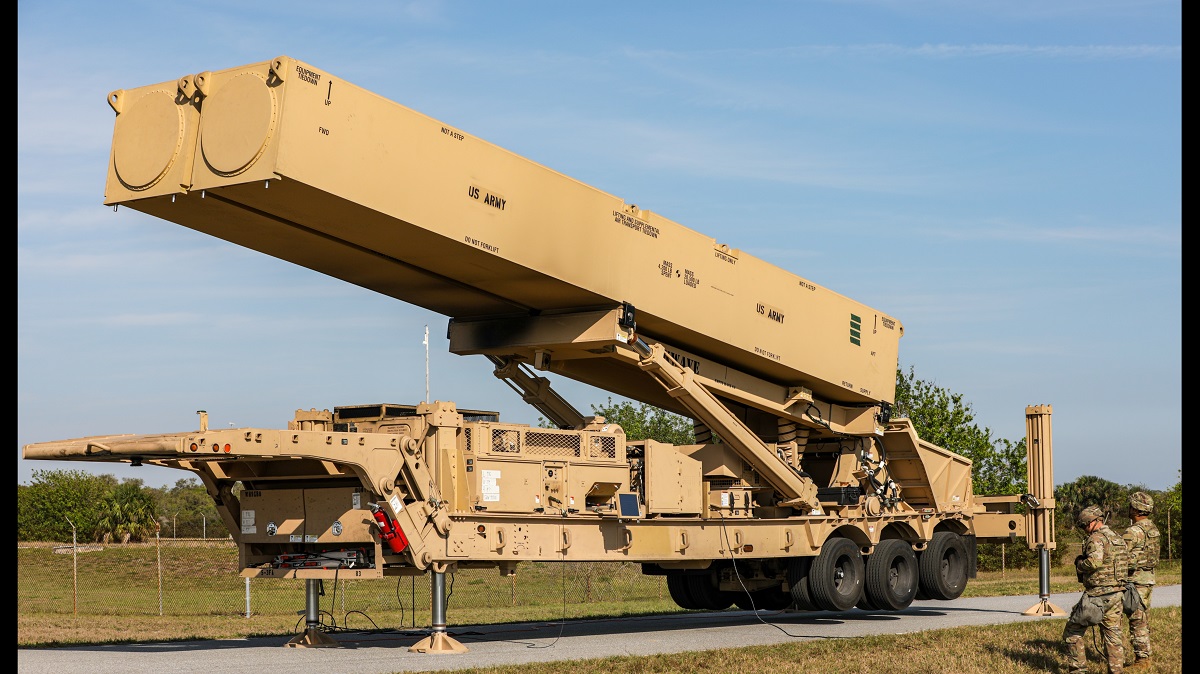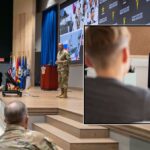
In May 2023, the War College hosted the second annual Strategic Landpower Symposium. Bringing together students, scholars and practitioners, the symposium presented senior leaders with original research and recommendations for the application of landpower to achieve national objectives. Included within the symposium were the findings of the Army War College Strategic Landpower Integrated Research Project, an effort of eleven members of the Class of 2023 in support of Army senior leader priorities. A BETTER PEACE has organized four podcast episodes with those students to discuss their projects, their relationship to the Strategic Landpower Symposium and possible implications for the future of U.S. security policy. In the virtual studio for this first episode are Paul Lashley and Andrew Hercik. They join podcast editor Ron Granieri to discuss the role of long-range fires, the implications of strategic weapons in the theater army, and how they can be better integrated.
The third annual Strategic Landpower Symposium is already scheduled for 7-9 May 2024. On-line registration will open 1 August, 2023 on the Army War College website.
What you don’t want is that battery commander taking the long range hypersonic weapons on a road march and creating this strategic escalatory act right? And all he’s trying to do or she’s trying to do is exercise the systems do the maintenance, but you have to be that careful when you’re talking strategic capabilities, these long range capabilities that have strategic implications.
Podcast: Download
LTC Andrew Hercik is a field artillery officer with previous assignments in the 82nd ABN Division, 7th Special Forces Group, XVIII ABN Corps staff, 18th and 75th FA Brigades, Alaskan Command, and the Army Staff. He is a graduate of the AY23 Resident Course at the U.S. Army War College.
COL Paul Lashley is a field artillery officer with previous assignments in 1st ID, 2nd ID, The National Training Center, Human Resources Command, 75th FA Brigade, and 5th Security Force Assistance Brigade. He is a graduate of the AY23 Resident Course at the U.S. Army War College.
Ron Granieri is Professor of History at the U.S. Army War College and the Editor of A BETTER PEACE.
The views expressed in this presentation are those of the speakers and do not necessarily reflect those of the U.S. Army War College, U.S. Army, or Department of Defense.
Photo Description: U.S. Army Soldiers assigned to a multi-domain artillery battery practice operating the new Long-Range Hypersonic Weapon (LRHW) during Thunderbolt Strike at Cape Canaveral Space Force Station, Florida, March 3, 2023. In Fall 2021, the multi-domain expert Soldiers received the first prototype hypersonic hardware at Joint Base Lewis-McChord, Washington.





The differences in command structure between USAREUR-AF, and USARPAC are tied both geography and function. In the Pacific, at least, MDTFs are operational-level organizations. They are definitely not brigades. Representing them as simply Fires assets misses the point. Hypersonic and long-range fires are only one aspect of MDTF operations. The point is convergence. These organizations are in constant contact during competition (e.g., now), their convergence of capabilities enables transitions (i.e., from crisis to conflict, or from conflict to competition). They do much more than move missiles around.
In the future, the FFA headquarters must become adept at managing convergence, gaining appropriate authorities and coordinating support from outside agencies. That is, as an enabling command for convergence.